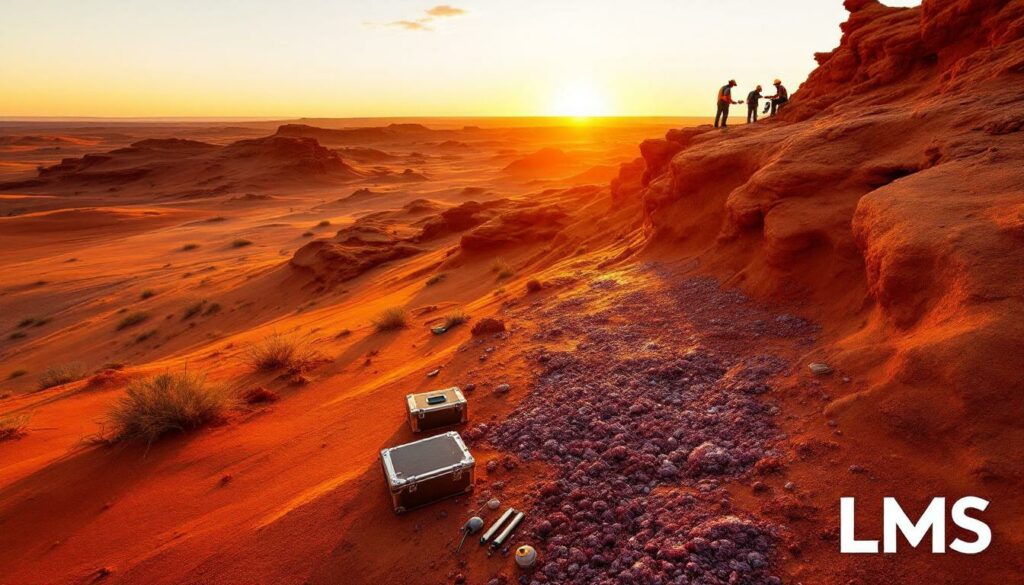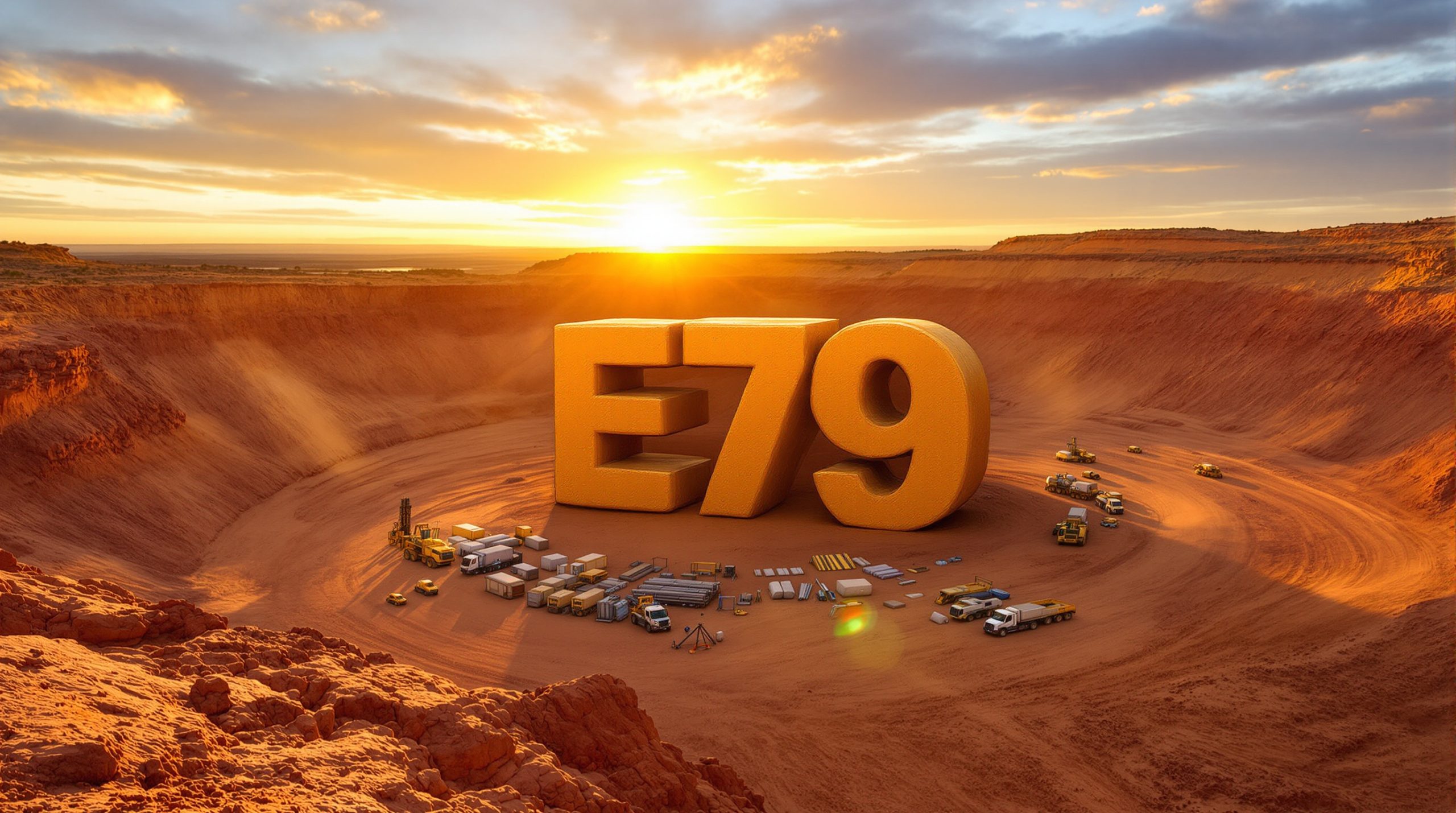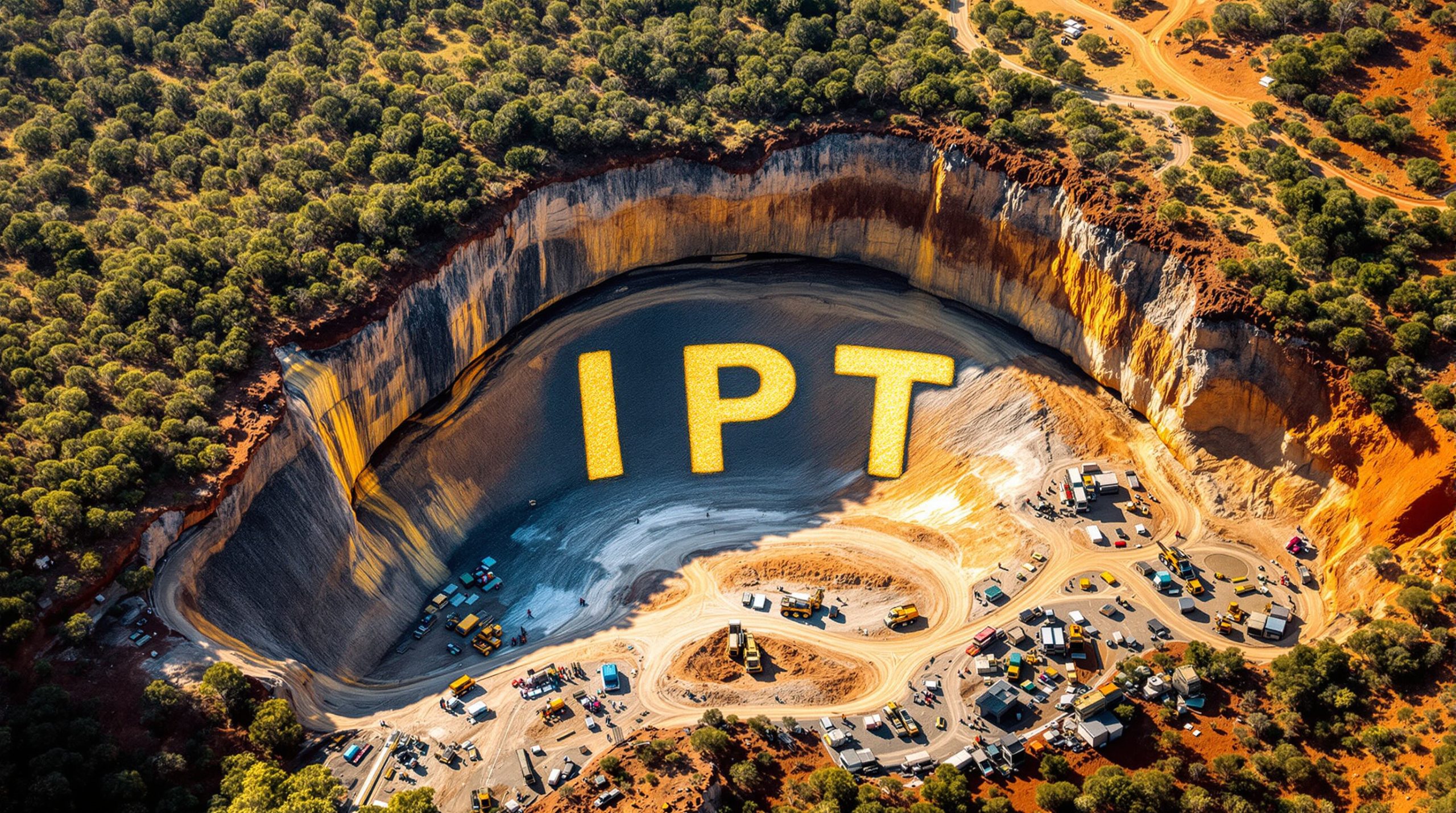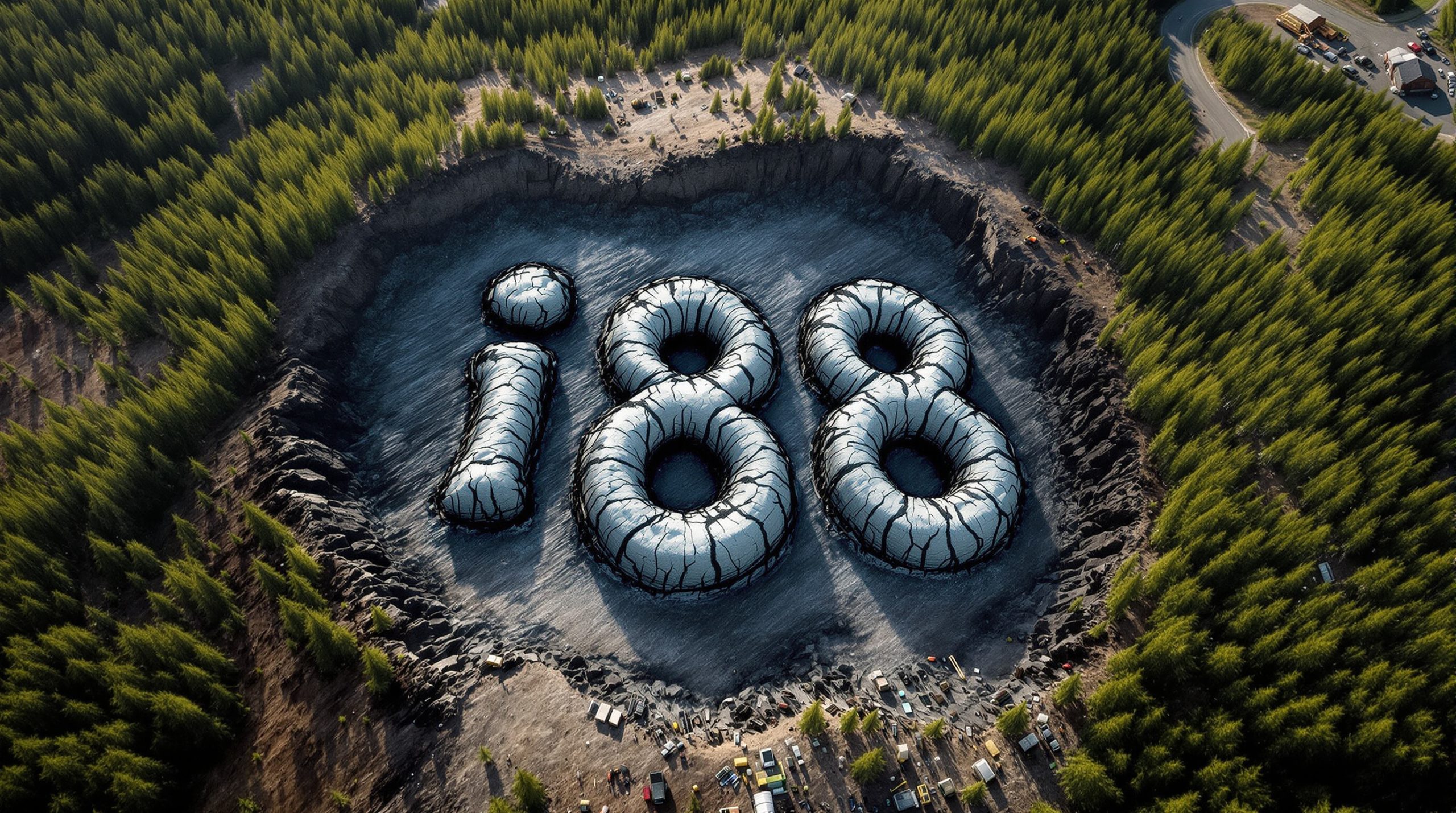Striking Gold in Sand: Exceptional HMS Results From Initial Sampling
Litchfield Minerals Ltd heavy mineral discovery has delivered remarkably high heavy mineral concentrations in creek bed samples, with key findings including:
- Heavy mineral content ranging from 31.1% to 44.9% across five bulk samples
- Average sand fraction (ideal for HMS processing) of 57.3% across all samples
- Visual confirmation of garnet dominance in the samples
- Over 7km² of prospective alluvial horizons identified at Oonagalabi
These results significantly exceed typical commercial HMS deposits, which generally operate at much lower grades, positioning this as a potentially valuable discovery.
"These results are an exciting first step to meet the potential demand for materials that could be mined on our leases. Sampling along the creek bed west of Oonagalabi has confirmed what we initially observed in the field – exceptional concentrations of heavy minerals," said Managing Director Mat Pustahya.
| Sample Number | Sand Fraction (%) | Heavies as % of Total Sample | Heavies as % of Sand |
|---|---|---|---|
| SSS0001 | 48.4 | 31.1 | ~64% |
| SSS0002 | 64.3 | 37.1 | ~58% |
| SSS0003 | 60.1 | 39.6 | ~66% |
| SSS0004 | 56.7 | 44.1 | ~78% |
| SSS0005 | 57.0 | 44.9 | ~79% |
Paradise Well: A Second Prospective HMS Target
The company's exploration model has been bolstered by historical findings at its nearby Paradise Well tenement (EL32190), where previous work reported:
- Up to 40% titaniferous magnetite in historical samples
- Accessory minerals including allanite (1-2%), zircon, xenotime, and apatite
- Up to 40% monazite content in basement outcrops
- Approximately 50km² of flat-lying quaternary alluvial cover
These findings reinforce the regional potential for HMS and rare earth elements (REE) across Litchfield's tenement package.
Understanding Heavy Mineral Sands: What Makes Them Valuable?
Heavy mineral sands are sedimentary deposits containing dense minerals that have been concentrated by water and gravity. The "heavy" designation refers to minerals with specific gravity greater than 2.85, which allows them to be separated from lighter minerals like quartz and feldspar through gravity processing.
The value of HMS deposits depends on several factors:
- Mineral assemblage: Different heavy minerals have varying market values
- Grade: The percentage of heavy minerals in the deposit
- Particle size and distribution: Affects processing efficiency
- Accessibility: Near-surface deposits are more economical to mine
Litchfield's initial samples show exceptionally high HMS grades (up to 44.9%), predominantly consisting of garnet—a commercially valuable industrial mineral used in abrasives, waterjet cutting, and filtration applications.
The Garnet Market: Industrial Demand Driving Growth
Garnet represents a significant opportunity as an industrial mineral with established markets:
- Global market size exceeding USD $600 million annually
- Typical garnet concentrate pricing between USD $200-250 per tonne
- Premium garnet products commanding even higher prices
- Growing demand from manufacturing, aerospace, and infrastructure sectors
The visually dominant garnet in Litchfield's samples could provide a straightforward pathway to commercialisation, given established processing methods and market demand.
Next Steps: Advancing the HMS Opportunity
Litchfield has outlined a clear development pathway to assess the economic potential of its HMS discovery:
- Complete mineralogical analysis (QEMSCAN and XRD) to confirm mineral assemblage
- Assess HMS source and tonnage potential
- Extend sampling across other nearby creek systems and floodplains
- Evaluate potential extraction pathways with industry partners
- Expand exploration to Paradise Well tenement
Why Investors Should Track Litchfield Minerals
This Litchfield Minerals Ltd heavy mineral discovery represents a potential game-changer for Litchfield Minerals for several reasons:
- Exceptional grades: The 31.1-44.9% heavy mineral content far exceeds typical commercial HMS operations
- Multiple revenue streams: HMS offers diversification beyond the company's existing base metals and uranium focus
- Near-surface mineralisation: Suggests potential for low-cost extraction
- Established markets: Garnet has well-established industrial applications and pricing
- Regional potential: Two prospective tenements with combined alluvial target areas exceeding 57km²
While early-stage, these results demonstrate Litchfield's ability to identify and rapidly evaluate new opportunities across its tenement portfolio. With mineralisation starting at surface and simple gravity-based processing requirements, any commercial HMS operation could potentially offer lower capital intensity and faster time-to-market than conventional mining projects.
For investors seeking exposure to critical and industrial minerals, Litchfield now offers a compelling multi-commodity opportunity with significant near-term catalysts as exploration advances.
Ready to Invest in Litchfield's Exceptional HMS Opportunity?
Discover more about Litchfield Minerals' remarkable heavy mineral sand discovery with grades far exceeding typical commercial operations. With exceptional HMS concentrations of up to 44.9%, established garnet markets, and multiple prospective tenements, this could represent a significant investment opportunity. Visit www.litchfieldminerals.com.au to learn more about their development pathway and position yourself early in this compelling multi-commodity story.




